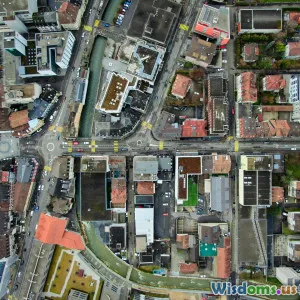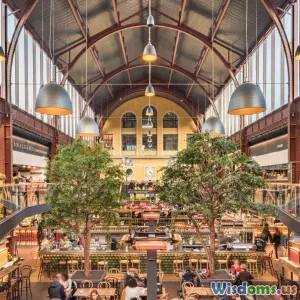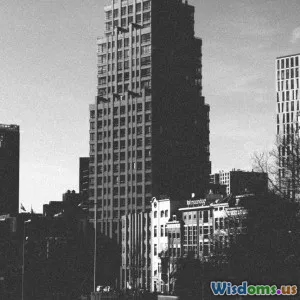
The Benefits of Urban Nature
7 min read Explore how urban nature enhances city life through improved health, biodiversity, and community engagement. (0 Reviews)
The Benefits of Urban Nature
Urban nature refers to the integration of natural elements such as parks, green roofs, and community gardens within city landscapes. As urbanization continues to rise, the need for incorporating nature into urban design is becoming increasingly apparent. The benefits of urban nature are profound, affecting not only the environment but also the physical and mental health of city residents. In this article, we will explore the numerous advantages of urban nature, backed by research and real-world examples.
1. Enhancing Mental Health
Numerous studies have shown that access to green spaces can significantly improve mental health. A study published in the journal Environmental Science & Technology found that individuals living near green spaces reported lower levels of stress and anxiety. The calming effects of nature can lead to reduced symptoms of depression and anxiety, promoting overall well-being.
Example: The High Line in New York City
The High Line, an elevated park built on a former railway track, exemplifies how urban nature can enhance mental health. It provides a tranquil escape from the bustling city, promoting relaxation and mindfulness among its visitors. Its design encourages walking, social interaction, and engagement with nature, fostering positive mental health outcomes.
2. Promoting Biodiversity
Urban areas often lack biodiversity due to concrete landscapes and limited green spaces. However, integrating nature into urban design can create habitats for various species, contributing to ecological health. According to the World Urbanization Prospects, urban biodiversity is crucial for maintaining ecosystem services such as pollination, pest control, and nutrient cycling.
Example: Singapore's Garden City Initiative
Singapore is a leading example of urban biodiversity integration. The Garden City initiative focuses on incorporating greenery into urban spaces, enhancing biodiversity while improving the quality of life for residents. The initiative has led to increased bird and insect populations, showcasing how urban nature can contribute positively to local ecosystems.
3. Improving Urban Climate Resilience
Urban areas are particularly vulnerable to climate change impacts, including heatwaves and flooding. Green spaces play a vital role in climate adaptation by reducing urban heat islands and managing stormwater. Trees and vegetation can lower temperatures through shade and evapotranspiration, while permeable surfaces in parks and gardens can absorb rainwater, reducing flooding risk.
Example: Melbourne's Urban Forest Strategy
Melbourne's Urban Forest Strategy aims to increase tree canopy cover across the city. This initiative not only helps mitigate the urban heat island effect but also enhances air quality, making the city more resilient to climate change impacts. By investing in urban nature, cities can better cope with extreme weather events.
4. Fostering Community Engagement
Urban nature can also foster social connections and community engagement. Parks and green spaces serve as communal areas where residents can gather, interact, and participate in recreational activities. These interactions strengthen community bonds and promote a sense of belonging.
Example: The Community Garden Movement
Community gardens have become increasingly popular in urban areas, allowing residents to cultivate plants, share resources, and engage with one another. These gardens not only provide fresh produce but also create opportunities for socialization, education, and collaboration among diverse community members.
5. Enhancing Economic Value
Investing in urban nature can also have significant economic benefits. Properties located near parks and green spaces often have higher market values, leading to increased property taxes and local business revenues. A report by the National Recreation and Park Association found that for every dollar invested in parks and recreation, communities can expect a return of approximately $4 in economic benefits.
Example: The Role of Central Park in New York City
Central Park is a prime example of how urban nature can enhance economic value. The park attracts millions of visitors annually, boosting local businesses and increasing property values in the surrounding areas. Its presence contributes significantly to New York City's economy, proving that urban nature can be a catalyst for economic growth.
Conclusion
The benefits of urban nature extend far beyond aesthetics. By improving mental health, promoting biodiversity, enhancing urban climate resilience, fostering community engagement, and contributing to economic value, urban nature plays a crucial role in shaping vibrant and sustainable cities. As urban areas continue to grow, integrating natural elements into urban design will be essential for ensuring the well-being of residents and the environment alike. Cities can take inspiration from successful initiatives worldwide and prioritize the development of green spaces that enrich urban life.
Embracing urban nature is not just a design choice; it’s a necessity for creating healthier, more resilient, and connected communities.
Rate the Post
User Reviews
Popular Posts





















